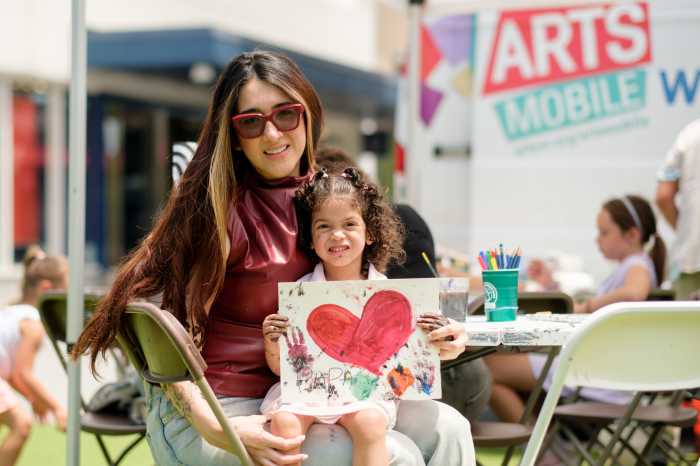Whether it’s volunteering time, starting a fundraiser, or just dropping change in the red bucket, you can inspire your child to help others.
Whether it’s something as simple as passing along a toy, dropping change in the red bucket or organizing a food drive, is it possible to nurture a giving spirit in a child?
It is, say the experts, and the answer is to start early and to start with you.
Do What Comes (un)Naturally
The desire to be giving towards others is motivated by empathy, the ability to put oneself in another person’s shoes and have a sense of what they might be feeling.
“I believe empathy begins to form in children by elementary school age,” says Jennifer Fontaine, Psy. D., a licensed psychologist with the Colorado Family Center. “A certain degree of it comes naturally…and can be enhanced by parents when they model giving behavior.”
Some parents are cautious about exposing their children to the difficulties of life too early. “I think there’s a hesitation to tell children about homelessness, hunger, foster children, etc.,” says Jim White, director of Public Relations and Marketing for Volunteers of America® Colorado Branch. “One can always say ‘they’ll find out about those things soon enough’. The reality is that they probably already know…through media, school, and friends. All too often we treat children as if they couldn’t possibly understand. From my experience, this is hardly the case,” he adds. “Volunteering teaches tolerance, an awakening if you will that not everyone is the same – some folks have problems and need some help.”
Fontaine agrees: “Children only know what they know. Exposing them to others with different circumstances, such as those in other less fortunate socio-economic or family situations, or those with physical or emotional disabilities expands a child’s perspective,” she explains. “It prevents the continuation of a self-absorbed perspective throughout life, and leads to more compassion for others.”
Everyone Benefits
When you give to someone in need, they feel the benefit from what you provide. But, as anyone who has volunteered will tell you, what you get in return far outweighs what you’ve given.
Cathy Oglesby, a teacher at Bromwell Elementary school in Denver, instituted a giving program as part of her 5th grade curriculum. Students choose a cause, give of their time and regularly report back to the class about their progress and experiences. In their final report, they have to tell what impact they think they had on the people they helped and what impact the project had on them, personally. The projects often require stretching the kids’ comfort zones by working with people they might not ordinarily interact with or using their free time or allowance for the good of others.
“I want kids to learn that they have power and they can use it in ways that can make a real, positive difference for others,” she adds. “They all have gifts that can benefit others.”
As one of Oglesby’s students said, “Volunteering makes you nervous at first but when you start doing it you get over your fears and realize that you can help. It puts a smile on their face and that makes you feel good inside.”
How to Nurture Your Child’s Inner Volunteer
1. Be a good example. “Children need to see their parents giving of their time and money and talking about why they do it,” says Oglesby.
2. Make it a family affair. White suggests finding activities that the whole family can get involved with, not only to instill giving values early but also to spend positive family time together. “Introduce children to volunteering in small amounts of time, maybe an hour or two,” he says. “Before they start, give them a simple explanation of why they are doing what they are doing.”
3. Empower the kids. Allow the children to choose different efforts and then talk about the experience. Ask them questions like, “Was it fun? Who benefitted? Would you like to volunteer there again or try something else?” suggests White.
4. Start small. When it’s time to donate outgrown clothes and toys, let the kids help choose what goes. “Even just giving a bag of clothes, books or toys to the thrift store can be a lesson in giving for children,” Oglesby says.
“Donate to a canned food drive or have kids save their change to give to the bell ringers at the holidays,” suggests Fontaine.
5. Every little bit helps. In times when our own money is tight and our time scarce, it may seem daunting to give to others but it doesn’t have to be.
“Families can find hundreds of ways to give of themselves that are simple and require very little time and/or financial commitment,” Fontaine says. “Expensive gifts, large commitments of time, and extravagant gestures are absolutely not necessary, and may send kids the wrong message,” she adds. “Let kids know that even in tough financial times, it’s still important to remember those who have even less than we do, and we can still find ways to help, even if we do not have extra money to give away.”
6. Be consistent. Whether your family makes giving a once a year or every week event make a commitment to stick to it. Being consistent makes giving a positive habit.
Courtney Drake-McDonough is an award-winning writer on staff at our sister publication Colorado Parent.












